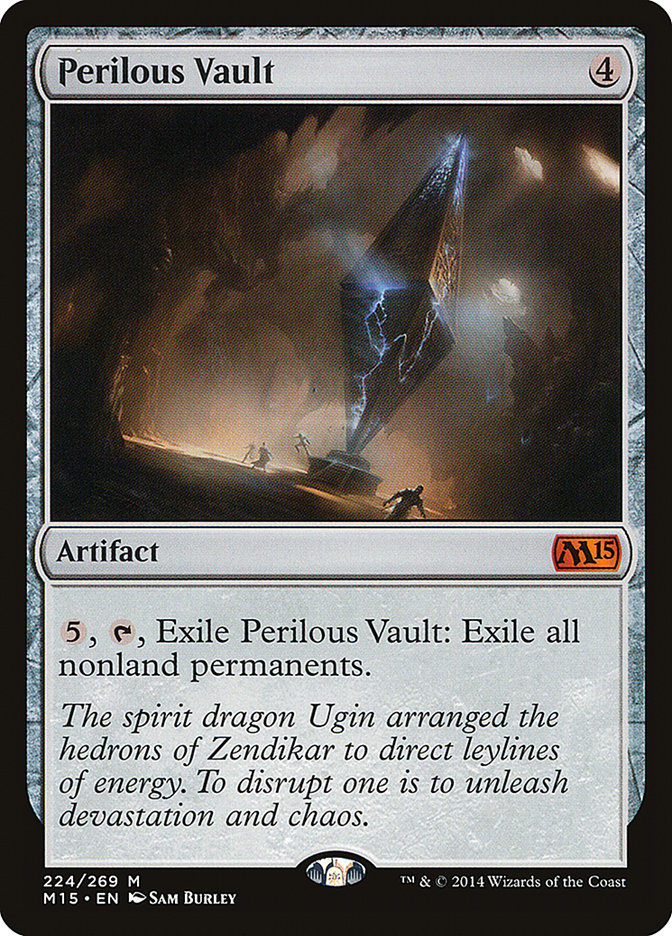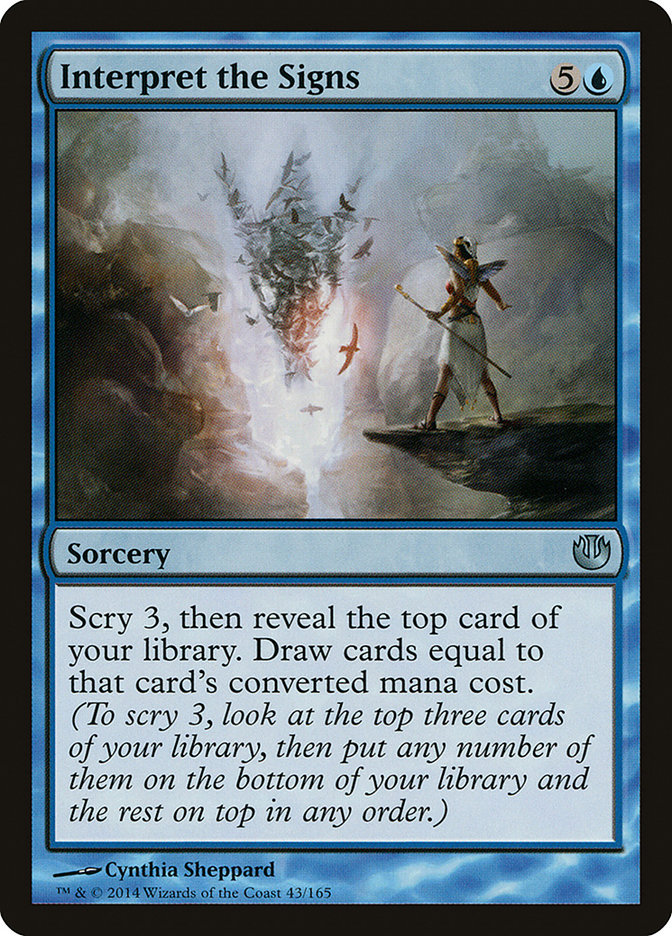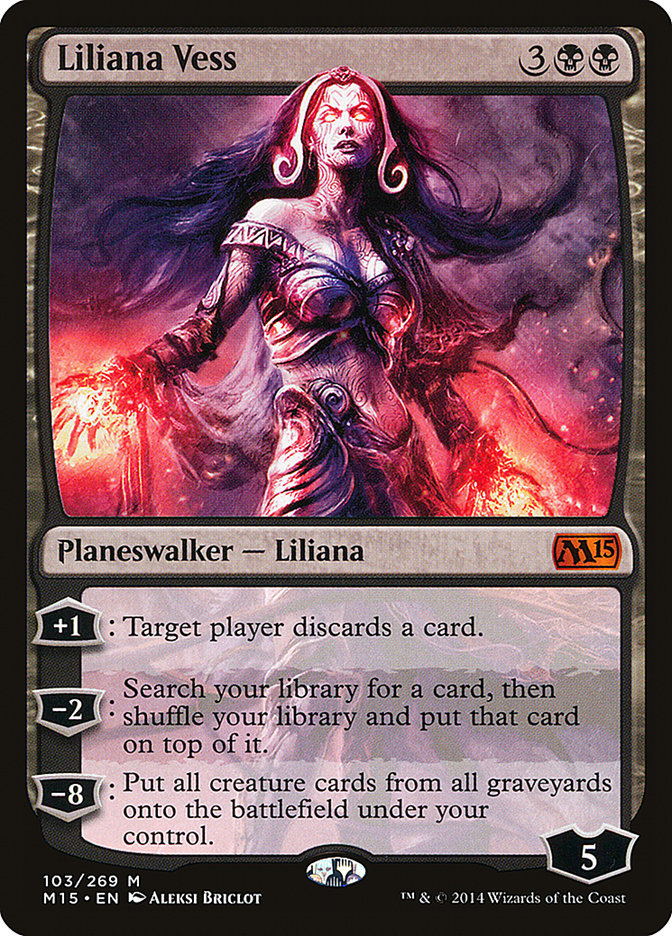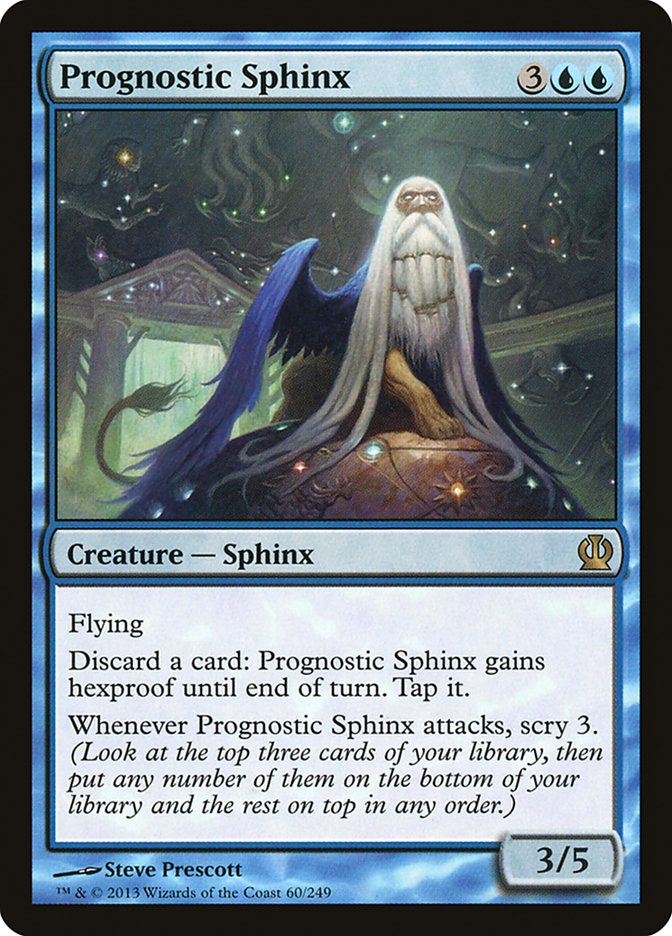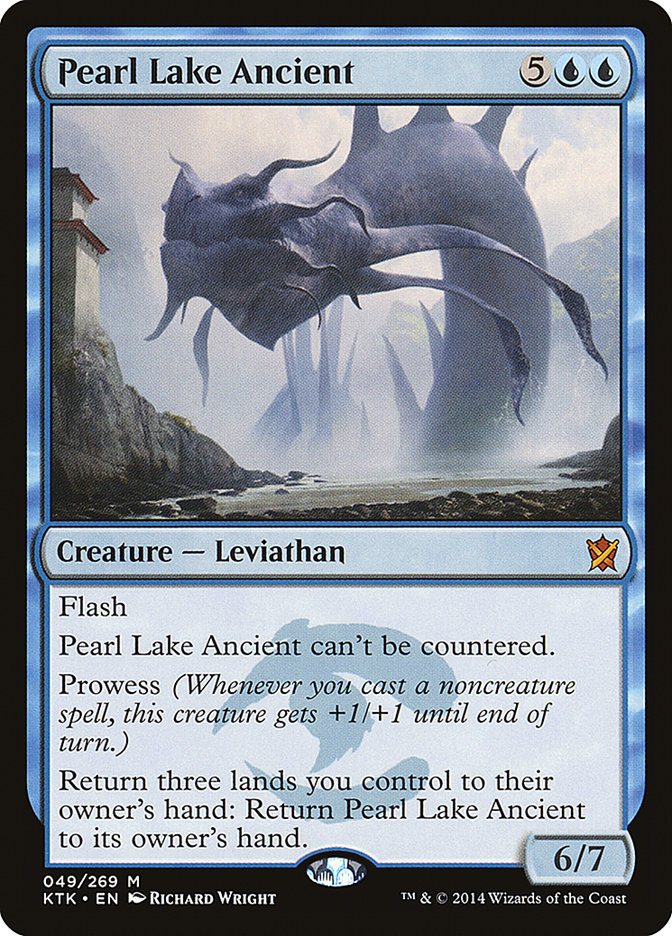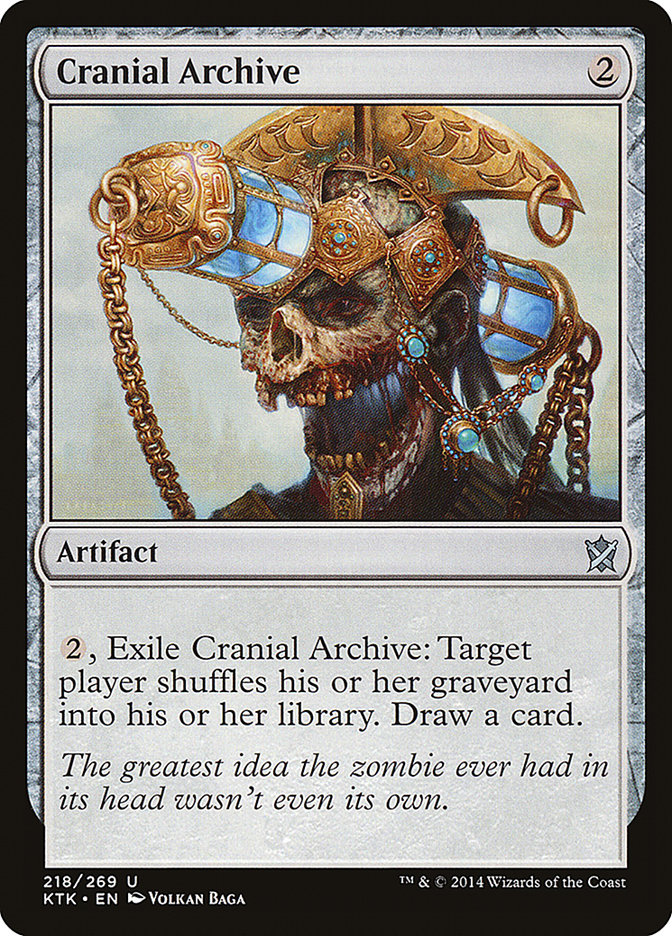Last week, I revisited my own past and
talked about how I got into Magic, and the excitement I was feeling about returning to the Pro Tour. A week later, and the event is over. My goal
was to re-qualify for the next Pro Tour, and I came up a little bit short.
Expectations and goals are different for everyone in this game. It’s interesting when you talk to non-tournament Magic players (or even non-players) about
an event like this. If you get 17th place at a 1,800 person Grand Prix, some people would find such a finish incredible and offer you congratulations.
Similarly, especially non-Magic players will offer a congratulations for a 10th place finish in a 175 player PTQ.
In these cases, they mean well. When your own goals and hopes are higher than that, a congratulations for a finish you yourself are disappointed in can
give a twinge of sadness. I’ve thanked every single person who congratulated me on my 63rd place finish. Still, my goal was one more win: the coveted 11-5
would mean another Pro Tour invite.
As it is, I am back to the grind.
Before Hawaii
Before Hawaii, I spent a great deal of time prepping for the Pro Tour in all of the best ways I could. As usual, I spent time discussing Standard with
people like Ronny Serio and Brian Kowal and talking Limited with the Madison crew at large (but most especially Matt Severa).
My first deck that I made was an update to an update to an update. For prep for Pro Tour Theros, Adam Jansen and Ronny Serio were both qualified, and Adam
Jansen had an excellent U/B Control deck that I really loved the look of. However, it didn’t really feel like it had any true incentives to play over pure
U/W Control. In the coming months after that PT, I would dedicate myself to U/W Control, getting a ton of great results with the deck. Still though, I
remembered the Ashiok deck that Adam had been working on.
With the rotation of Return to Ravnica Block though, there was no longer a huge specter looming over control.
There are certain cards that, in their power, demand that you play them. In the economy of deckbuilding, one of the reasons that you often see so few cards
played in, say Legacy, compared to the cards available to play is just that, from a game theory perspective, cards are dominated by other cards or
decks are dominated by other decks. To be ‘dominated’ means that there is just a strictly better payoff available in another strategy. Now, for the most
part, this isn’t a pure, true domination; there often do exist instances where one card might be more relevant than the more commonly played
alternative, but often these instances are so rare as to approach irrelevancy.
We don’t see much in the way of Werebear in Legacy because of Tarmogoyf and Scavenging Ooze. In Standard, it was hard to even begin making a control deck
that didn’t run Sphinx’s Revelation because you’d have to justify that loss. What was the gain? With it gone, there is nothing so incredible to compare it
to, and the door is open for U/B.
My first thought was that Adam’s deck maybe could be explored, especially because I was curious how it would play out with a card that I imagined could be
a sleeper:
Sitting down with Matt Severa for some early test games made it clear. The Vault was more than real; it was impressive.
There was one moment I remember very clearly that made me feel as though the card was actually incredibly well-suited to what the deck was doing. I had a
Perilous Vault out, eight mana available, and a Dissolve in my hand but nothing else. Importantly, I also had an Ashiok, Nightmare Weaver in play with a
Courser of Kruphix under it. Matt had out everything: Elspeth, Sun’s Champion, Sarkhan, the Dragonspeaker, Courser of Kruphix, soldiers, Elvish
Mystic, Sylvan Caryatid – you name it. His attack on the previous turn had dropped Ashiok down to four.
“Untap. Draw. Activate Ashiok for three, in response Vault.”
The board dissipated into nothingness, and all that was left standing was my stolen Courser. The game fell to pieces shortly thereafter for my opponent.
I was willing to be talked out of the deck, but it would have to be something impressive to get me to switch.
Early Hawaii
I arrived in Hawaii on the Friday before the Pro Tour, hitting a PTQ at Da Planet that was swarmed on by off-island pros like you wouldn’t believe. At the
end of the PTQ, tenth place was the highest finishing player from Hawaii, and the finals was all Italy.
I spent the next few days exploring the island, eating food with friends, and doing some playtesting by myself as I waited for the team to arrive.
The rest of my team arrived after the weekend, and after checking into the house, we got down to work. The early version of my list I’d sent over a week
earlier, and it looked like this:
Nightmare Control
4 Despise
4 Ashiok, Nightmare Weaver
4 Dissolve
4 Divination
1 Liliana Vess
2 Dig Through Time
1 Interpret the Signs
1 Silence the Believers
3 Bile Blight
4 Hero’s Downfall
4 Perilous Vault
2 Aetherspouts
1 Drown in Sorrow
25 Land
A lot of our early test decks eschewed aggro. We had a few versions of Black Aggro and Rabble Red (as well as Boss Sligh), honed versions of Jeskai Aggro,
a more aggressive version of Abzan, and Steve Rubin’s build, which would eventually become the list that Ari would win the event with.
One of the first things that became apparent was that the deck needed more mana. As the week wore on, it also became clear that Divination was
underwhelming. I love Divination as a means to keep a deck running smoothly (I’ve used a few Divination in many control decks over the last few years, side
by side with Sphinx’s Revelation). An earlier version had run Jace’s Ingenuity and Divination, but I hadn’t yet run Dig Through Time, which was
clearly proving itself.
I had a great record against so many of the decks we were playing, once I made the switch to 26 land and no Divination, I felt like I had to
retest them all, just to see how much was lost. There absolutely was a little bit that was lost against the aggressive decks. Each and every aggressive
strategy made up some ground on U/B Control because of the shift. A part of it, I think, is that whether you cast Divination on turn 3 or turn 6, drawing
more land and removal in a way that doesn’t necessarily take up your whole turn mattered. Jace’s Ingenuity can come to the party late, and Dig
Through Time ended up requiring more resources be expended in order to make it cheap enough to cast early.
Ultimately, despite this cost, it felt like it was right to switch over.
Despite beating nearly every deck that was thrown at it, most of the players in the group weren’t on the deck until the very last minute. At that point
though, I still think there were unfinished aspects of the deck, and many of the adopted switched back to Steve Rubin’s very excellent Abzan Midrange deck,
which lived a little bit higher on the curve and was simply just a very excellent choice.
We spent a great deal of time working on and discussing Limited, and Neil Reeves proved an invaluable asset. I had already been working on a particular
archetype of five-color for the Draft portion of the event, and Neil had a wildly different approach that seemed incredibly worthwhile. Some drafting made
it clear that you couldn’t draft the deck if someone near to your right was also drafting it, but there might be room for one of the other
sub-archetypes to be nearby, and I saved that thought away. I felt good about Draft, so I focused on Constructed, watching the feedback from as many drafts
as I could.
My final version of the U/B Control deck that I registered for the Pro Tour is still a deck that I both think is quite good and a deck that is
unfinished. I needed another intensive day or two to finish the details. Since the Pro Tour, I’ve been engaged in catching up with work, and so I haven’t
managed to do so yet, but rest assured, it’s on my agenda.
All The U/B Control
According to Patrick Chapin, pound-for-pound, U/B Control was
the most successful archetype at the PT. Frankly, I’m not surprised. In my testing leading into the event, I felt like I had good matchups versus
every version of Abzan that I played against that wasn’t Steve Rubin’s build (and other Courser/Midrange strategies), good matchups against Jeskai, good
matchups against Devotion strategies, and absurd matchups against non-blue control. If you look at the 7-3+ records, you’ll note that that is about 75%
positive matchups.
Needless to say, that feels a little bonkers.
I ran into Andrew Cuneo and talked with him a little about the event. We seem to have this habit, going back many years, of working on the same deck. When
William Jensen did so well at GP Dallas with U/W Control, I had people asking me if Huey had gotten the list from me, and I knew that the list had
to be Cuneo’s. Going back further, in the lead up to Worlds where Andrew went 6-0 with U/W Control, I was working with that proto-Pantheon group and also
championing U/W Control. Our two decks had a lot in common but also some fundamental differences. If there is a blue control deck in a format, it just
usually means that we both find similar versions of it.
I mentioned to him that now, as before, we’d made the same deck.
“Does your deck have Ashiok?” he asked.
“Yes,” I replied.
“Then it’s not the same deck,” he said.
“Well, I think yours might be better in this case, but they have the same core idea.”
“I don’t run unplayables in my deck.”
I was a little dumbfounded at that reply, but I shrugged it off. What is the good in arguing about it, and maybe my little Ashioks might help me win a
match.
Our two decks matched up several times throughout the weekend, and his won every time. In part it was because he was just better set up for the control
war, where I was better set up for an attacking deck. The head-to-head doesn’t matter so much though, in my opinion. We both were, in essence, playing a
“semi-rogue” deck, and how well we played versus the field was more important. In that measure, we were pretty close.
Ivan Floch – U/B Control (w. 4 Prognostic Sphinx) – 22 points
Andrew Cuneo – U/B Control (w. 2 Pearl Lake Ancient) – 22 points
Greg Orange – Esper Control (w. 3 Elspeth, Sun’s Champion) – 21 points
Owen Turenwald – U/B Control (w. 2 Pearl Lake Ancient) – 21 points
Adrian Sullivan – U/B Control (w. 4 Ashiok, Nightmare Weaver) – 21 points
I still feel as though my deck wasn’t quite completed to where it could have been while still being what it fully was. One of my points of evidence for
this was that I didn’t feel like I had a coherent 60 card deck after sideboarding, even in some very popular matchups. These final details are pretty key,
but I definitely feel as though I dropped the ball in the end, as on the very last day of testing I had a seventeen card sideboard, and I shaved it down to
fifteen, basically having run out of time.
Orange’s list is interesting, but obviously has a few different components to it, given the extra color. Here are the three U/B Control lists (Owen played
Cuneo’s):
Planeswalkers (5)
Lands (26)
Spells (29)

Creatures (2)
Lands (27)
Spells (31)
- 3 Thoughtseize
- 3 Jace's Ingenuity
- 4 Hero's Downfall
- 4 Dissolve
- 4 Bile Blight
- 1 Aetherspouts
- 4 Perilous Vault
- 2 Murderous Cut
- 2 Disdainful Stroke
- 4 Dig Through Time
Sideboard

Creatures (4)
Lands (27)
Spells (29)

There is a great deal that we all agree about. If we were to make a quick amalgamation of our lists, it would look like this:
26.66 land
4.66 discard
4 Dissolve
3.33 finishers
3.33 Bile Blight
3.33 Dig Through Time
2.66 Perilous Vault
1.66 Jace’s Ingenuity
1.33 Drown in Sorrow
.66 Murderous Cut
.33 Liliana Vess
Obviously, just adding and averaging doesn’t a deck make, but it can give a great sense of what the core of a deck looks like. Each of these decks really
is on basically the same gameplan, with Floch’s the furthest off from it, replacing the “Disk” of Perilous Vault with massive amounts of counterspells and
more removal.
I know that when I eventually sat down against one of The Pantheon playing the deck, I actually viewed myself as having a worse matchup than I truly did.
They definitely had the edge, but it wasn’t as damning as I imagined it was going to be. They had more relevant control spells game 1, more card draw, and
a better finisher. But seeing the lists now, I see it as a disadvantaged matchup, not a sure loss.
My own list has some cards that perhaps require a bit of explanation. The biggest one is probably Interpret the Signs.
This card is your equivalent to the “lights out” finish of a Sphinx’s Revelation. The worst case scenario can indeed happen, and it did to me at the Pro
Tour: I saw three land on the scry, shipped them to the bottom, and then revealed a land. In this scenario though, it is very much like casting a Jace’s
Ingenuity, where you just end up drawing three currently-useless land and then top deck another. On the other hand, it is so easy to reveal a three, not to
mention a four or five, it is usually a nail-in-the-coffin when you resolve this card, assuming the game isn’t already over. Liliana Vess makes this card
particularly crazy, when you can tutor for Interpret the Signs, draw it, then tutor for Dig Through Time to draw eight.
Speaking of Liliana Vess, she entered into the deck as a means to have another stable finisher that could also be used to take control of the game. Ashiok,
Nightmare Weaver can be a great way to end the game, and an early Ashiok can just run away with a game. However, any planeswalker suffers from a lack of
resilience. Running another card that isn’t merely a finisher but can finish the game was important.
Prognostic Sphinx and Pearl Lake Ancient were cards that I’d worked on and ended up relegating to the sideboard. Prognostic Sphinx was most important as a
means to hold the table against aggressive decks. Pearl Lake Ancient was a great weapon in pure control wars but also served to bounce my Radiant Fountain,
which could be a big deal versus Jeskai Aggro. In the end though, neither card made the maindeck, and Pearl Lake Ancient was the final cut from my
sideboard due to metagame considerations. Now that it appears control will be a part of the metagame, that will have to shift.
Finally, the last weird card some might be asking about would be Cranial Archive. Cranial Archive ended up being a huge card against decks with Hero’s
Downfall of all varieties be they aggro, control, or midrange. Also, it was a useful tool against graveyard-based decks–I even played it in that matchup
once!
The Pro Tour
The Pro Tour started out with a bang for me with one hell of a draft:
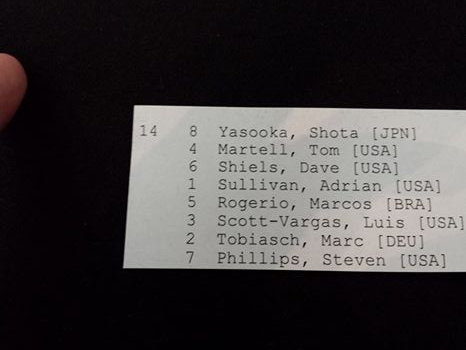
I felt like I ended up with a 3-0 Draft deck, but it didn’t end up being so. I ended up going 2-1, losing to LSV, but beating Shouta and Marc Tobiasch very
handily. I might have beaten LSV as well, but Master of Pearls is a hell of a card; both his game wins came with that card finishing me off, and I’m pretty
sure I could have beaten any other card that he could cast (even Crater’s Claws). Alas.
I went into a short version of the play-by-play on my Facebook Page, but I’ll share some
more details here.
Day One ends in a disappointing 3-2 for the U/B deck, beating Jelger Wiegersma running G/B Devotion, Hiroya Wada with Sidisi Delve (go, go Cranial
Archive!), and Joshua Milliken with G/R Devotion, but losing to Abzan Midrange twice. I view that as my best matchup, but in the first case, I lost to Matt
Severa who was very aware of everything that I was going to be doing and had a number of unusual cards in his deck, and in the second case, in the
critical final game versus Matias Leveratto, I failed to draw a fifth land for several turns, then drew seven in a row.
The second draft, I again felt like I had a 3-0 deck, but this one went quite poorly. In this, I blame myself. I was decked by one opponent, and if I had
drafted a single Barrage of Boulders or Roar of Challenge, I could have won this one. In the end, I beat the R/W Aggro deck of Igor Gorbunov, but lost to
Byron King’s Abzan Midrange deck and Jose Francisco Silva’s B/W Warriors deck. In this second case, I unmorphed a Sagu Mauler into his table, and he
unmorphed a Ruthless Ripper. He apologized, noting it was the only card that could have devastated me like it did. I replied that it was still my fault – I
had passed him the card!
Now, I was in the position of needing to win the next five matches to hit my goal of 11-5 and requalifying for the next Pro Tour.
I start out with an easy win vs. Yung-Ming Huang with U/W Heroic. I was grateful for Craig Wescoe putting this into a late-week gauntlet just to get the
practice in; as a result I played around a Stubborn Denial that might have sent us to a third game.
I followed up defeating Marcos Rogerio and then Robin Dolar, both with Jeskai Aggro. I view this as a good matchup, but it is still close.
Finally, in round 15, I lose two quick games to Gabriel Nassif, playing Cuneo’s U/B Control deck. In the aftermath of game 2, I actually think I made
several errors to lose that game where I should have won, but I know that even if I had won, it would have been a hard fight for that last game of the
match. Gabriel would go on to lose to Shahar Shenhar playing Jeskai Aggro, whereas I would go on to defeat Joel Larsson who was playing a four-color
midrange deck.
I spent Sunday helping prep Ari for his Top 8, with Craig Wescoe, Seth Manfield, Steve Rubin, and the rest of the crew. When it was all over, Ari held up
the check, and I think each of us could feel great about the ways in which we helped contribute to that success. Ari is a talented player, but working with
others can help someone accomplish so much more.
As for me, in the end, 10-6 is enough for 63rd place and a $1,000 check.
It is an accomplishment to be certain. But I think I could have done better.
Next time, I’m sure I will.
See you there.


